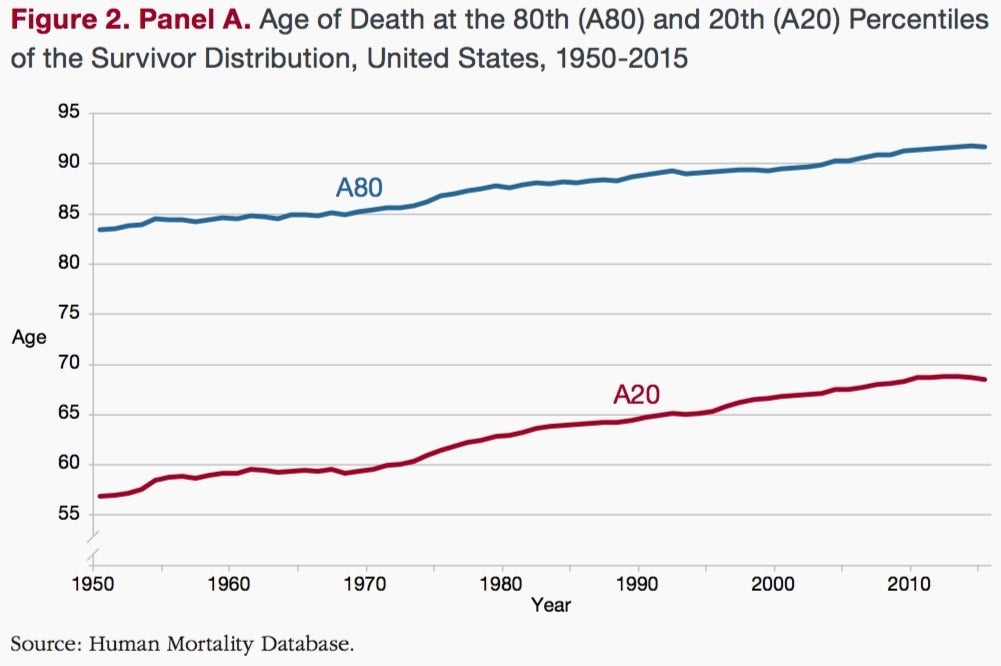America’s inequality problem applies to life expectancy, too
When we try to figure out how people in a given country are faring, the go-to statistics are wealth and income. There’s a purer gauge than money, though: Life expectancy.


When we try to figure out how people in a given country are faring, the go-to statistics are wealth and income. There’s a purer gauge than money, though: Life expectancy.
By that standard, America isn’t doing so hot—and inequality is a big reason why.
The average American lives a lot longer than they used to. In 2015, the average American was 79 when they kicked the bucket—compared with age 68 in 1950, according to a new policy brief from the Stanford Institute for Economic Policy Research.
But changes in life expectancy have stagnated in the US since 2010 (and by some estimates, shrunk in the last two years). Things are even worse when you look at how longevity is distributed—meaning, the gap in life expectancy between the longest- and shortest-living Americans.
One way of assessing this by looking at the difference between the age of death for the people whose life expectancy falls into the 80th percentile, and people whose life expectancy is in the 20th percentile.”

Back in 1950, people in the 80th percentile died at the ripe old age of 83.4, while those in the lowest bracket died around age 56.9. That gap of nearly 27 years shrank somewhat over the following decades. But since about 2010, the gap has been widening again. In 2015, the difference was 23.2 years.
Another sign of the unequal state of American well-being emerges when you stack the US up against other countries, note the authors, health economists Victor Fuchs and Karen Eggleston.
Americans in the 20th percentile die just shy of 69 years, compared with age 74 in Sweden. In fact, say the authors, the 20th percentile in the US dies at a younger age than every rich democracy except a few former Soviet republics.
What to do about this? One obvious place to start is combating the things that kill people prematurely. Unlike the things that kill 90-year-olds, these don’t tend to be physical maladies like cancer and heart disease. So, for instance, slashing the body count for auto accidents and gun deaths would help close the gap a lot.
This isn’t to say that health isn’t important. Addressing mental health problems, notably suicide and drug overdoses, are key, as are policies that improve low-income children’s health—such as immunizations to combat low birth weight. But these likely require social and economics interventions, not expensive medical breakthroughs.
Unfortunately, the American government is far more focused on the killers of the old than the young, as the authors note. Out of 281 discrete categories for federal funding, accidental death (which includes car accidents and “accidental poisoning”—meaning, overdoses) doesn’t even merit its own category—even though it’s easily one of the top causes of premature death. Even gloomier is the amount of funding the US government invests. “Total injury,” the category in which car accidents are included, receives less than 4% of funding for heart disease and cancer.